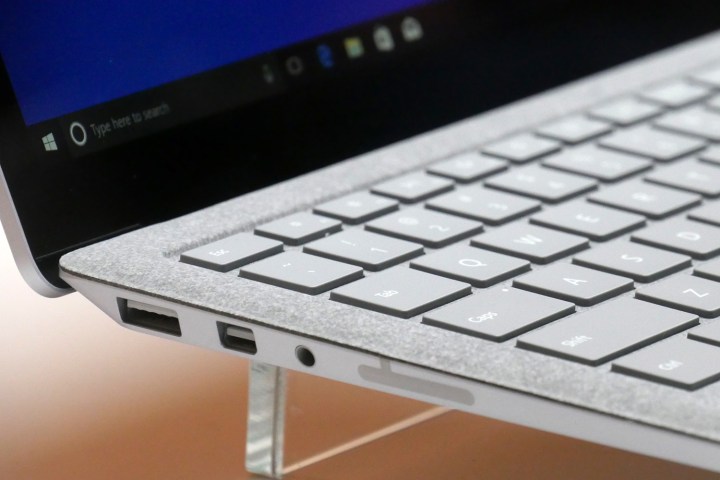
As we mentioned last week, USB Type-C has nothing to do with speed — it defines the port size and type of connector. The typical USB 3.1 port uses a large, rectangular “Type-A” interface relying on a single-sided this-side-up connector. But with the combined introduction of USB 3.1 Gen2, Thunderbolt 3, and Type-C, there is a lot of misconception that they are all one in the same.
But that is not the case at all. Even more, there are specific cables required for the technology residing behind the Type-C port and they all generally look the same. Adding to the confusion, Type-C ports are sometimes used to charge their host devices. Customers could essentially grab the wrong Type-C charger and quickly run out of battery juice because the charger was not up for the task. Users would then turn to the device maker with their complaints, not the charger manufacturer.
Microsoft does not want that. Microsoft does not want customers to deal with the various Type-C cables, underwhelming chargers, all the adapters, and the third-party Type-C docks. That is why the Surface Laptop features only one USB 3.1 Gen1 Type-A port, one headphone jack, one Mini DisplayPort connector, and the Surface Connect port. Simplicity.
That latter connection is how customers can “safely” expand their Surface device experience. Microsoft’s $200 Microsoft Surface Dock adds two Mini DisplayPort connectors, one gigabit Ethernet port, four USB 3.1 Gen1 Type-A ports, and one audio out port. The dock connects to a compatible Surface device via Microsoft’s proprietary Surface Connect port. Right now, it works with the Surface Pro 3, Surface Pro 4, and Surface Book but the Surface Laptop will undoubtedly be added soon.
While limiting a Surface device’s connectivity seems like forcing customers into purchasing the dock, Microsoft sees this setup as brand stability. Customers won’t get ticked at Microsoft because they are confused about the different types of cables, chargers, and so on. Microsoft is controlling the end-to-end experience and there is nothing wrong with that.
Call it consumer confidence.
“It’s not like we haven’t known about USB-C for a long time,” general manager of Surface Engineering Pete Kyriacou told The Verge. He added that through the closed docking scenario, Microsoft can provide additional connectivity options with confidence.
One thing to keep in mind is that the Surface Laptop targets the education sector despite its high-end price. It takes aim at students and teachers who already have peripherals on-hand, eliminating the need for an annoying adapter that may eventually be misplaced. But why only include one USB port in the first place?
“That came down to design and space,” Kyriacou said.
Editors' Recommendations
- USB-C charging laptops: Here’s what you need to know
- Signs point to Microsoft finally giving up on the Surface Connect port
- This 240W USB-C cable opens up new charging possibilities
- Satechi just launched a crazy 165-watt, 4-port USB-C charger
- The EU wants Apple to ditch the Lightning port for USB-C by 2024


